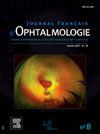ChatGPT在眼科应用的趋势与进展
IF 1.1
4区 医学
Q3 OPHTHALMOLOGY
引用次数: 0
摘要
ChatGPT(聊天生成预训练变压器)是一种先进的人工智能聊天机器人,它的使用在眼科领域,特别是在疾病诊断和患者教育方面显示了巨大的潜力。ChatGPT由OpenAI开发,作为最先进的大型语言模型(LLM),可以生成连贯且与上下文相关的文本以响应用户查询。虽然传统的眼科诊断和治疗方法通常需要大量的时间和训练有素的专业人员的专业知识,但ChatGPT的集成可以简化和优化诊断和治疗过程,同时提高患者对其病情的认识和参与。尽管ChatGPT在促进疾病诊断、风险预防和管理方面有了新的前景,但验证其安全性和有效性还需要进一步的研究。本文详细评价了ChatGPT在眼科中的最新应用进展,强调了其在辅助诊断、风险预防和患者教育方面的作用,同时探讨了其未来的前景和潜在的挑战。利用ChatGPT(聊天生成预训练转换器),一种先进的人工智能聊天机器人,监测眼科领域的潜在重要数据,记录数据,诊断疾病和患者的健康教育。在OpenAI的基础上,在大环境下的语言模块(LLM)上,在背景下的相关数据中,在本文章由计算机程序翻译,如有差异,请以英文原文为准。
Trends and advances in ChatGPT applications in ophthalmology
The use of ChatGPT (Chat Generative Pre-trained Transformer), an advanced artificial intelligence chatbot, demonstrates significant potential in the field of ophthalmology, particularly in disease diagnosis and patient education. Developed by OpenAI as a state-of-the-art large language model (LLM), ChatGPT generates coherent and contextually relevant text in response to user queries. While traditional diagnosis and treatment approaches in ophthalmology often require considerable time and the expertise of highly trained professionals, the integration of ChatGPT can streamline and optimize diagnostic and treatment processes while enhancing patient awareness and engagement regarding their conditions. Despite its emerging promise in facilitating disease diagnosis, risk prevention, and management within the field, further research is essential to validate the safety and efficacy of ChatGPT. This detailed review evaluates recent advances in ChatGPT applications in ophthalmology, emphasizing its roles in assisted diagnosis, risk prevention, and patient education, while exploring the future prospects and potential challenges involved.
L’utilisation de ChatGPT (Chat Generative Pre-trained Transformer), un chatbot avancé d’intelligence artificielle, montre un potentiel significatif dans le domaine de l’ophtalmologie, notamment dans le diagnostic des maladies et l’éducation des patients. Développé par OpenAI en tant que modèle de langage de grande envergure (LLM) de pointe, ChatGPT génère un texte cohérent et pertinent dans son contexte en réponse aux questions des utilisateurs. Tandis que les approches traditionnelles de diagnostic et de traitement en ophtalmologie nécessitent souvent beaucoup de temps et l’expertise de professionnels hautement formés, l’intégration de ChatGPT peut rationaliser et optimiser ces processus tout en améliorant la sensibilisation et l’engagement des patients. Malgré ses promesses émergentes pour faciliter le diagnostic des maladies, la prévention des risques et leur prise en charge dans ce domaine, des recherches supplémentaires sont essentielles pour valider la sécurité et l’efficacité de ChatGPT. Cette revue approfondie examine les avancées récentes dans les applications de ChatGPT en ophtalmologie, en mettant l’accent sur ses rôles dans le diagnostic assisté, la prévention des risques et l’éducation des patients, tout en explorant les perspectives et les défis potentiels associés.
求助全文
通过发布文献求助,成功后即可免费获取论文全文。
去求助
来源期刊
CiteScore
1.10
自引率
8.30%
发文量
317
审稿时长
49 days
期刊介绍:
The Journal français d''ophtalmologie, official publication of the French Society of Ophthalmology, serves the French Speaking Community by publishing excellent research articles, communications of the French Society of Ophthalmology, in-depth reviews, position papers, letters received by the editor and a rich image bank in each issue. The scientific quality is guaranteed through unbiased peer-review, and the journal is member of the Committee of Publication Ethics (COPE). The editors strongly discourage editorial misconduct and in particular if duplicative text from published sources is identified without proper citation, the submission will not be considered for peer review and returned to the authors or immediately rejected.

 求助内容:
求助内容: 应助结果提醒方式:
应助结果提醒方式:


